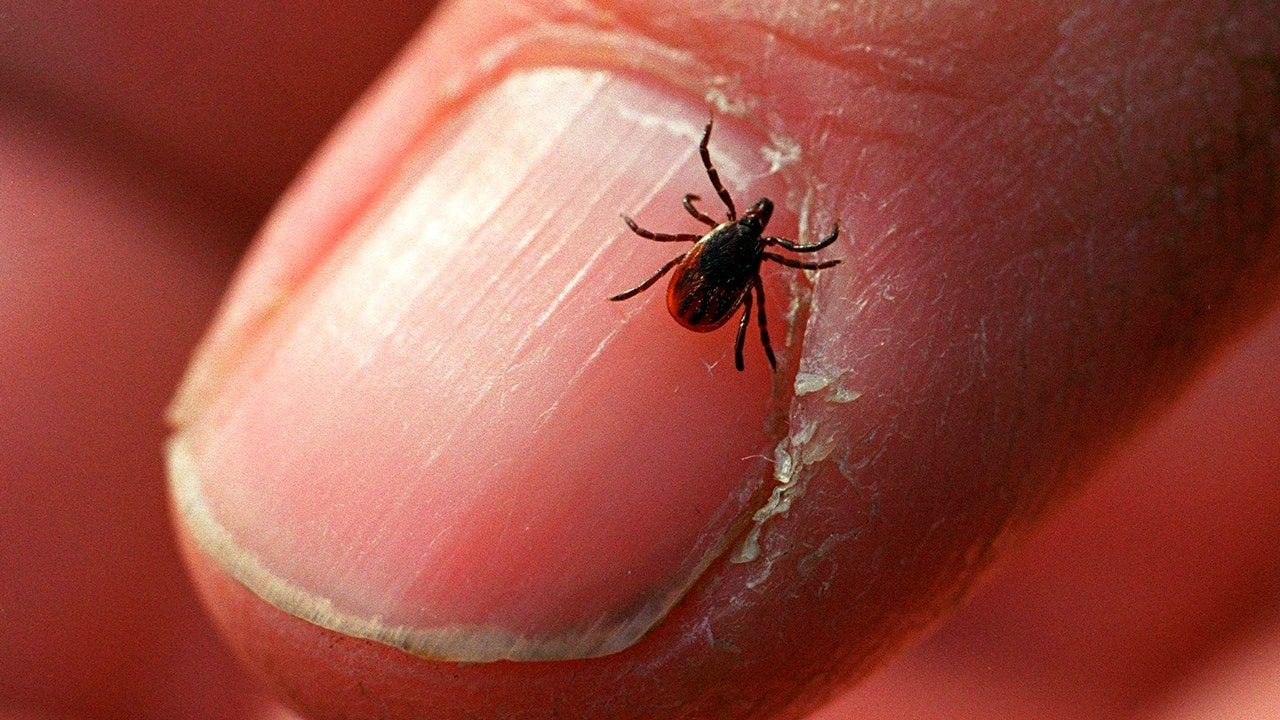Health
How Do You Actually Help a Suicidal Teen?

Bender got into the field — in addition to psychiatry, he trained in psychodynamic therapy, a form of in-depth talk therapy — in part because he was the teenager whom friends confided in, and he never forgot how life can feel out of control when you are an adolescent. He wanted a career that allowed him to help children as much as possible by prescribing meds and providing therapy.
Bender, who still has a boyish face at 35, wears his hair neatly combed and prefers plaid shirts (he never wears a doctor’s coat). He’s a horror-movie fan: His office décor includes a poster from “Halloween” and small figurines like Pennywise, Wolf Man and Stripe from “Gremlins.” With his patients (who don’t see him in his office), Bender plays the role of curious, open-minded confidant. By the time he gets to them, some children are, as he put it to me, “so done” — frustrated by school, parents, on-and-off-again friendships, romantic relationships, their lack of control over much of anything, life. “They are mad, so mad,” he says. One threw apple juice in his face; two girls threatened to kill him after they said they found his address on the internet. “I tell kids, please hate me if you need to,” he says. “I prefer you hate me instead of your parents.”
His goal is to understand how it feels to be them, not to tell them what they need to do. “When you can’t make sense of your despair, I can make sense,” says Bender, who has won several teaching and clinical-care awards. “Not ‘expert’ sense, but a realistic sense of what may be going on. I can help them feel contained and engage them. Or not react in the same way as their family. I’m not going to understand everything while they are here. But we can find a closer gray about what the real story is. And, hopefully, help parents do so, too.”
As he talked, more children were waiting at the hospital’s Psychiatric Emergency Services, six floors below. The PES (pronounced Pez) is the first stop when children and adolescents come to Western Psych’s emergency department after passing through security and handing over their phones and bags. To fill out forms, they have to use soft, bendable plastic pens, so they can’t harm themselves or others. (For the same reason, the bathrooms’ metal toilets have nondetachable seats.) TVs play cartoons, cooking shows, Hallmark movies. The only available phone is attached to the wall. Patients often spend hours in one of two pediatric waiting areas, sometimes wearing hospital gowns after having been transferred from another medical center. They sit in the blue-and-orange plastic chairs around a table with board games or in leather chairs that fold out to become single beds. Some patients stay overnight — or several nights — when Bender’s unit cannot accommodate them.
Psychiatrists at PES interview children and their parents (or other caregivers) separately, to figure out if the patients needs to be admitted or if a referral for outpatient care, which can include crisis services, will be enough. Most teenagers who experience suicidal thoughts don’t need to be hospitalized and most don’t kill themselves (about 2,800 did in 2021). Psychiatrists have to weigh the possible protective factor of admitting a child against the reality of limited beds and the fact that hospitalization can make anxiety worse, which can drive adolescents away from mental health care altogether.
Medical professionals use the word “suicidality” to refer to a range of thoughts and actions, from passive death wishes, like the desire to go to bed and not wake up, to more active thoughts and, at the most extreme, suicide attempts and death. Though we know a lot about some causes of suicidality — mood disorders, child abuse, substance use — experts don’t understand why the numbers have been rising, on the whole, over the last decade. Some blame social media, which can both deprive children of sleep — the lack of which is associated with increased suicidal thoughts — and increase loneliness and feelings of being left out (even as it offers helpful communities for children, especially those who feel marginalized). Since 2020, the pandemic has likely been another factor.
Systemic conditions can also fuel anxiety, anger, dread and, in turn, suicidal thoughts and actions among particular groups — Black children facing trauma and persistent racism, for example, or trans children forced to use the wrong bathroom for them at school and made to feel ostracized, unseen and alone. Rates of suicidality in both populations have increased in recent years. “Ignore the social and family context at your peril,” says Brent, who has tracked the rise in adolescent suicide for years.

Health
fatty15 has the essential nutrient to ease stress and well-being

Sign Up
Create a free account to access exclusive content, play games, solve puzzles, test your pop-culture knowledge and receive special offers.
Already have an account? Login
Forgot your password?
Get back to the Sign In
Use left and right arrow keys to navigate between menu items.
Use escape to exit the menu.
Health
Summer is tick season, but these tips can help you avoid the bloodsucking bugs

Tick season is starting across the U.S., and experts are warning the bloodsuckers may be as plentiful as ever.
Another mild winter and other favorable factors likely means the 2024 tick population will be equal to last year or larger, some researchers say.
“It’s very bad and has only been getting worse,” said Susanna Visser of the Centers for Disease Control and Prevention.
TICK BITES AND LYME DISEASE: WHAT TO DO IF A TICK BITES YOU OR YOUR PET
An increasing variety of ticks are pushing into new geographical areas, bringing unusual diseases. Exotic southern species like the Gulf Coast tick and the lone star tick are being detected in New York and other northern states, for example.
But the tick that experts warn of the most is a common blacklegged tick, which is found mainly in forests and spreads Lyme disease. Infection rates begin to peak in May, and U.S. health officials estimate nearly half a million Lyme disease infections happen annually.
Here’s a look at what’s expected this year and how you can protect yourself.
An adult deer tick, also known as the blacklegged tick, crawls on a fingernail at Connetquot State Park in Oakdale, New York on Dec. 27, 2011. (Bill Davis/Newsday RM via Getty Images)
TICK FACTS
Ticks are small, eight-legged bloodsucking parasites — arachnids, not insects — that feed on animals and sometimes people. Some ticks are infected with germs that can cause illness, and they spread those germs when they bite.
There is no widely accepted estimate of how many ticks there are from one year to the next, but there is a scientific consensus that they are an increasingly common health hazard in large portions of the United States.
Blacklegged ticks — also known as deer ticks, since they feed on deer — are among the most common ticks in the eastern half of the U.S. They were plentiful centuries ago, then diminished when forests were cut down and deer were hunted, and rebounded alongside deer and wooded suburbs. The ticks have spread out from pockets in New England and the Midwest over a wider range.
Tick populations cycle throughout the year and their numbers depend on a few factors. They like warm, humid weather, and more can be seen after a mild winter. The more deer and mice available to feed matters, too.
Overall, the blacklegged tick population has been expanding for at least four decades, researchers say.
“This is an epidemic in slow motion,” said Rebecca Eisen, a CDC research biologist and tick expert.
2024 TICK SEASON FORECAST
Weather can play a role in the severity of a tick season.
Very cold, dry winters can whittle down tick populations, but recent winters have been mild — a trend some attribute to climate change.
As Scott Williams, a tick researcher at the Connecticut Agricultural Experiment Station, said: “Winters are no longer limiting the tick population.”
Ticks can withstand the heat but tend to almost hibernate when it’s a dry summer. That happened in Maine in 2020 through 2022, said Chuck Lubelczyk, a vector ecologist at the MaineHealth Institute for Research.
But last year was a very wet year, and tick activity multiplied in Maine — the state with the highest incidence of Lyme disease in the country. Weather service predictions call for higher temperatures and precipitation, so “on paper, at least, it could be a very good year for the ticks,” Lubelczyk said.
In Wisconsin, adult ticks were out longer than usual due to a mild winter. The tick nymphs are starting to emerge, and a wet spring is setting the stage for the possibility that the population will be robust, said Xia Lee, an entomologist at the Wisconsin Department of Health Services.
Ditto New York.
“It will be as bad as last year, or worse,” said Saravanan Thangamani, who studies ticks and tickborne diseases at SUNY Upstate Medical University in Syracuse.
WHAT IS LYME DISEASE?
Not all ticks are infected with disease-causing germs — about 20% to 30% of the blacklegged tick nymphs that emerge in the Northeast and Midwest this spring and into summer will be carrying the bacteria that causes Lyme disease, experts estimate.
Lyme disease symptoms tend to start between three and 30 days after a bite occurs and can include fever, headache, fatigue and a bull’s-eye-like rash. If you get bitten and develop symptoms, see a doctor to get treated with antibiotics.
HOW TO KEEP TICKS OFF OF YOU
Experts say the best thing to do is take steps to avoid a tick bite in the first place.
If you go outdoors, make note of wooded areas and where grassy properties start bleeding into wooded areas. Ticks tend to perch on ankle-level vegetation with their upper legs outstretched, waiting to latch on to an unsuspecting dog or human.
Try to walk in the middle of paths, wear light-colored and permethrin-treated clothing and use Environmental Protection Agency (EPA)-registered insect repellents.
HOW TO CHECK FOR TICKS
When you come inside, check for ticks. They can be found anywhere on the human body, but common spots include around the waist, behind the knees, between fingers and toes, on underarms, in the belly button and around the neck or hairline.
They are harder to see when they are young, so look carefully and immediately pull them off with tweezers.
The CDC does not recommend sending individual ticks to testing services for analysis, because a person might get more than one tick bite and the results from the tested tick may not be sufficient information.
Health
Pizza for Weight Loss? Top MD Says This Dough Makes It Possible

Sign Up
Create a free account to access exclusive content, play games, solve puzzles, test your pop-culture knowledge and receive special offers.
Already have an account? Login
Forgot your password?
Get back to the Sign In
Use left and right arrow keys to navigate between menu items.
Use escape to exit the menu.
-

 World1 week ago
World1 week agoPentagon chief confirms US pause on weapons shipment to Israel
-

 Politics1 week ago
Politics1 week agoRFK Jr said a worm ate part of his brain and died in his head
-

 Politics1 week ago
Politics1 week agoOhio AG defends letter warning 'woke' masked anti-Israel protesters they face prison time: 'We have a society'
-

 News1 week ago
News1 week agoNine Things We Learned From TikTok’s Lawsuit Against The US Government
-

 Politics1 week ago
Politics1 week agoBiden’s decision to pull Israel weapons shipment kept quiet until after Holocaust remembrance address: report
-

 Education1 week ago
Education1 week agoVideo: Police Use Pepper Spray on Protesters on G.W.U.’s Campus
-

 World1 week ago
World1 week agoA look at Chinese investment within Hungary
-

 News1 week ago
News1 week agoThe Major Supreme Court Cases of 2024

![Pietro Beccari: ‘There is no household in the world that doesn’t have [contact with] Louis Vuitton’](https://www.ft.com/__origami/service/image/v2/images/raw/https%3A%2F%2Fwww.ft.com%2F__origami%2Fservice%2Fimage%2Fv2%2Fimages%2Fraw%2Fhttps%253A%252F%252Fd1e00ek4ebabms.cloudfront.net%252Fproduction%252Fb68a5c6a-f6ef-40c7-8c6c-ce8d9b288cee.jpg%3Fsource%3Dnext-article%26fit%3Dscale-down%26quality%3Dhighest%26width%3D700%26dpr%3D1?source=next-opengraph&fit=scale-down&width=900)













